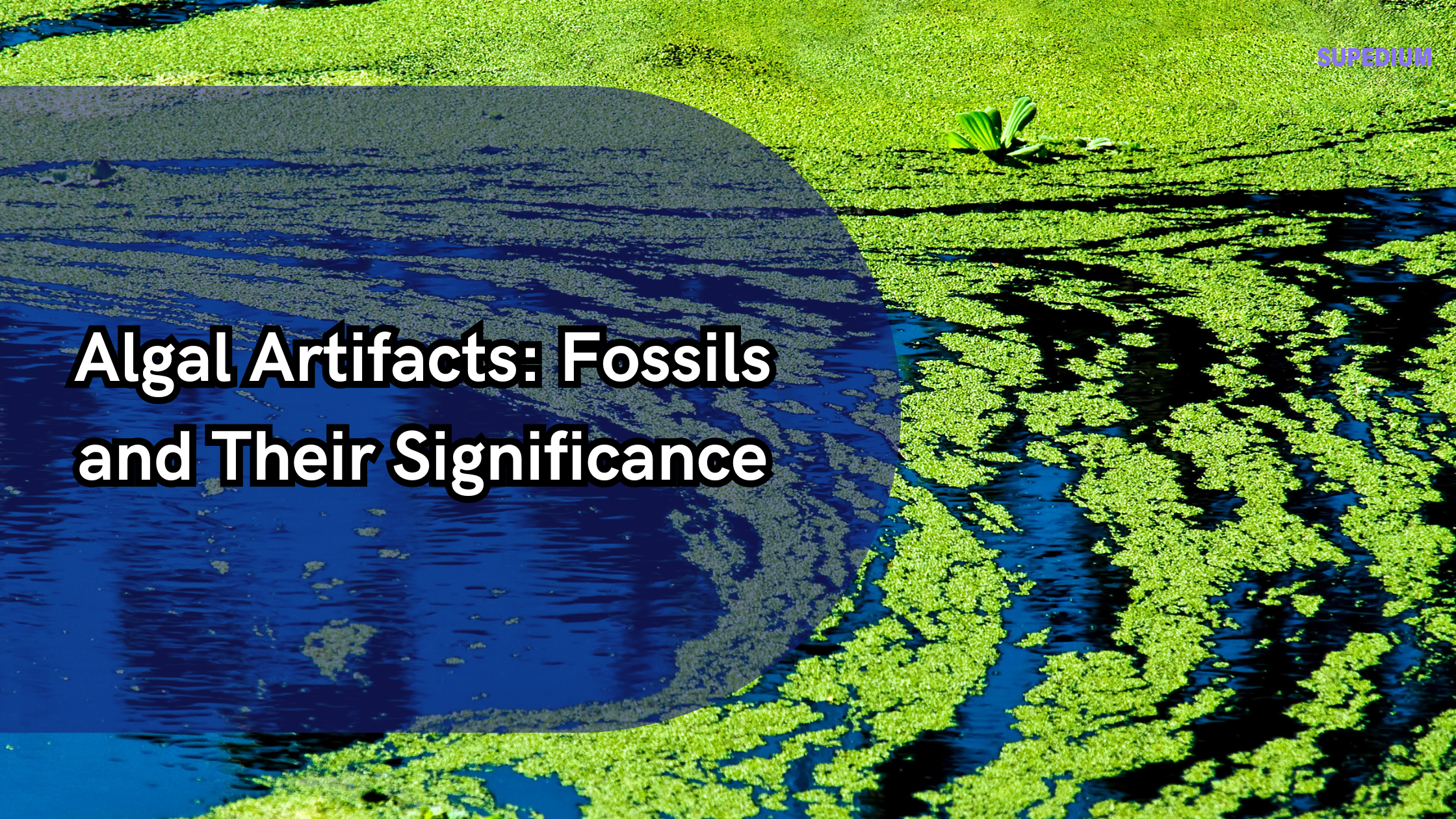Table of Contents
![]()
I. Introduction
Algal artifacts refer to fossilized remains or impressions of algae, an important group of photosynthetic organisms. Algae, ranging from microscopic diatoms to large macroalgae like kelps, have played crucial roles in ecosystems throughout Earth’s history. Studying these algal artifacts helps us understand ancient environments, evolutionary processes, and past climate conditions.
II. Types of Algal Artifacts
A. Fossilized Algae
- Microfossils: Microfossils include tiny, often single-celled organisms such as diatoms and cyanobacteria. Diatoms, with their intricate silica shells, are among the most common algal fossils and provide valuable data on past aquatic environments. Cyanobacteria, or blue-green algae, are important for understanding the early Earth’s atmosphere and the development of oxygenic photosynthesis.
- Macrofossils: Macrofossils are larger and can include various forms of algae. Charophytes, related to modern green algae, are found as macrofossils in sedimentary rocks. Larger macroalgae, like kelps, also appear in the fossil record, offering insights into past marine ecosystems.
B. Algal Impressions
Algal impressions occur when algae leave imprints in sedimentary rock. These impressions can include detailed structures of algae mats or stromatolites, layered structures formed by microbial communities. Such impressions are crucial for studying the morphology and growth patterns of ancient algae.
C. Biochemical Residues
Biochemical residues from algae, such as organic compounds, can persist long after the physical remains have decomposed. These residues, including pigments like chlorophyll, provide additional evidence of algal presence and can be used to reconstruct past environmental conditions.
III. Methods of Studying Algal Artifacts
A. Fossilization Process
The fossilization of algae involves several key steps. Algal remains must be rapidly buried to prevent decay. Over time, sedimentary processes, such as mineralization, replace organic materials with minerals, preserving the algal structure. Conditions such as low oxygen levels and high sedimentation rates are favorable for the preservation of algal fossils.
B. Analytical Techniques
- Microscopy: Microscopic techniques, including light and electron microscopy, are used to examine the detailed structure of algal fossils. Light microscopy can reveal general features, while electron microscopy provides high-resolution images of cell structures and surface textures.
- Chemical Analysis: Techniques such as mass spectrometry analyze biochemical residues, identifying compounds that indicate the presence of algae. These analyses can reconstruct past environmental conditions and the role of algae in ancient ecosystems.
- Imaging Techniques: Advanced imaging techniques, including CT scanning, allow for non-destructive examination of fossils. These methods provide three-dimensional views of algal structures, revealing internal features that are not visible through traditional methods.
C. Field and Laboratory Techniques
Field collection involves carefully excavating algal fossils from sedimentary rocks, ensuring minimal damage. In the laboratory, fossils are prepared for detailed study through processes like cleaning, mounting, and sometimes chemical treatment to stabilize the specimens.
IV. Historical and Evolutionary Significance
A. Early Life and Evolution
Algae have been a significant component of Earth’s biosphere since the Precambrian, playing a key role in the development of early life. Fossil evidence indicates that algae were among the first organisms to perform oxygenic photosynthesis, dramatically altering Earth’s atmosphere and paving the way for more complex life forms.
B. Paleoenvironmental Reconstructions
Algal fossils help reconstruct ancient climates and habitats. For instance, the presence of certain algal types can indicate freshwater or marine environments, and algal mats can suggest low-oxygen conditions. These reconstructions contribute to our understanding of Earth’s historical climate and ecological changes.
C. Biogeographical Patterns
The distribution of algal fossils across different geological periods reveals past oceanographic and climatic conditions. For example, fossilized algae from the Mesozoic era can show how ancient marine environments differed from modern ones, reflecting shifts in climate and sea levels.
V. Case Studies and Examples
A. Notable Algal Fossils
Several key discoveries have advanced our understanding of ancient algae. The Burgess Shale, for instance, is famous for its well-preserved Cambrian fossils, including early algal forms. The Ediacara Hills in Australia offer insights into some of the earliest multicellular life, including primitive algae.
B. Contributions to Paleobiology
Discoveries of algal fossils have led to significant changes in our understanding of early life. For example, the identification of stromatolites in ancient rocks has provided evidence of early microbial life and its role in shaping Earth’s atmosphere.
VI. Applications and Implications
A. Climate Change Research
Algal fossils are valuable for studying past climate conditions. By analyzing the types and distribution of algae in ancient sediments, scientists can infer historical climate patterns and trends, aiding predictions of future climate change.
B. Astrobiology
The study of extremophiles, including some ancient algae, informs our search for life on other planets. Algae’s ability to survive in extreme conditions provides clues about the potential for life in extraterrestrial environments.
C. Conservation and Environmental Science
Insights from ancient algal ecosystems inform modern conservation efforts. Understanding past algal responses to environmental changes helps predict how current ecosystems might react to ongoing environmental pressures.
VII. Challenges and Future Directions
A. Preservation Issues
Preserving algal fossils poses challenges due to their delicate nature. Factors like chemical decay and mechanical damage can affect fossil quality. Advances in preservation techniques, such as using synthetic resins, are helping to address these issues.
B. Research Gaps
Despite progress, several areas of algal paleobiology remain underexplored. More research is needed on the diversity of ancient algal forms and their ecological roles. Emerging technologies, such as genetic analysis of ancient algae, offer promising avenues for future study.
C. Interdisciplinary Approaches
Integrating paleontology, geology, and biology enhances our understanding of algal artifacts. Collaborative efforts across disciplines can provide a more comprehensive view of ancient ecosystems and the role of algae in historical climate and environmental changes.
VIII. Conclusion
Algal artifacts, from fossilized remains to biochemical residues, provide crucial insights into Earth’s ancient environments and evolutionary history. By studying these artifacts, scientists reconstruct past climates, understand the evolution of early life, and apply lessons to contemporary environmental issues. As research advances, the role of algal fossils in science will continue to grow, revealing new aspects of our planet’s history.
Share This





Be the first to comment